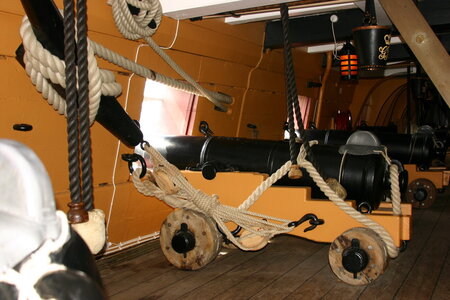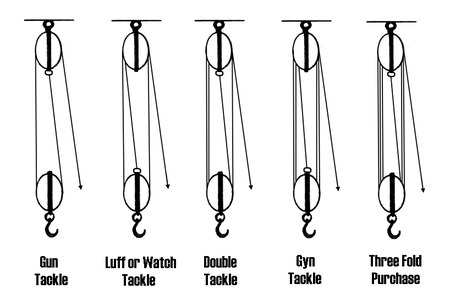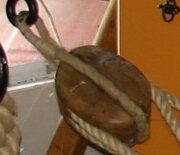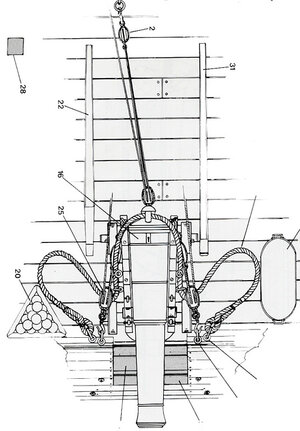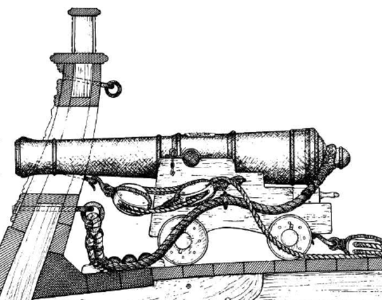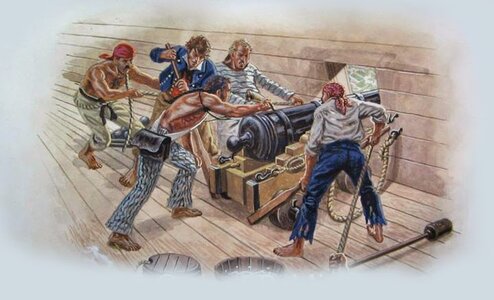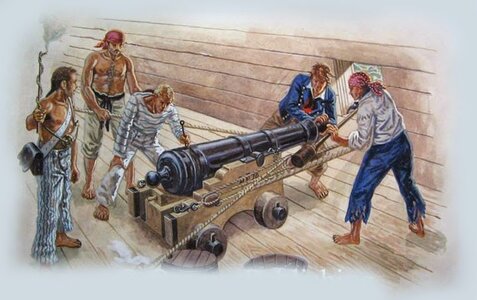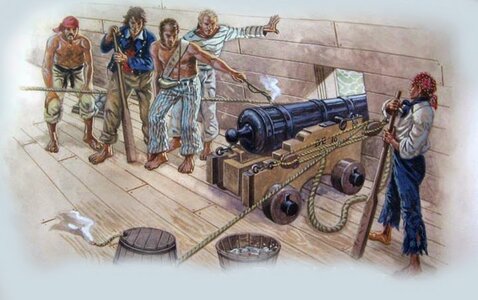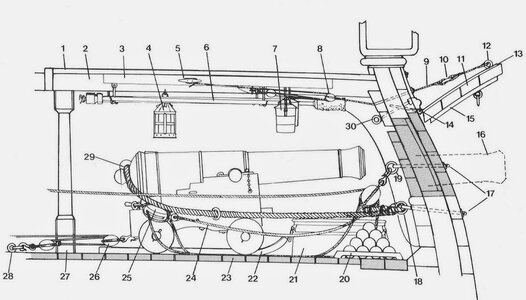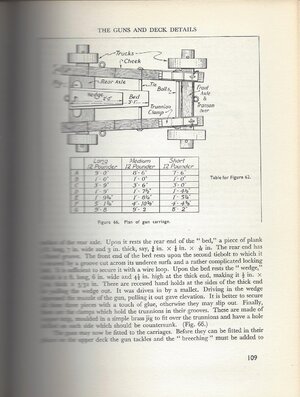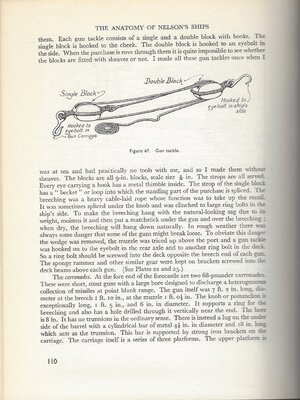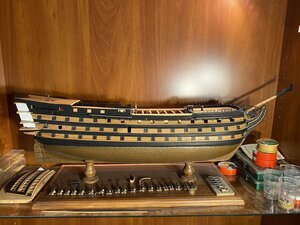Tommyg - The rule of thumb for the great or long guns was 500 pounds per man. Some authors have written of 7 men and a boy for an 18 pounder and 15 men and a boy for a 32 pounder. Other sages say it took 10-15% of the "people" to sail the ship, implying that the remaining 85-90% could work the guns which, perforce, had to include carronades.
Patrick O'Brien's brief book Men-of-War (WW Norton and Co.) provides a table of long guns and carronades by shot weight and cwt (British hundred-weight) allowing some approximation from the 500lb rule.
e.g. guns: 32 lbr 55cwt 22 lb; 24 lbr 50 cwt 21 lb; 18 lbr 42 cwt 21 lb; 12 lbr (long) 34 cwt 31 lb.
e.g. carronades: 68 lbr 36 cwt; 32 lbr 17 cwt 14 lb; 24 lbr 11 cwt 2 qr 25 lb. But consider that with the carronades being on slides and having pivot pins the 500 lb per man rule would not apply. And, note that cwt "then" was not what we'd now assume it to be.
Also, any vessel fighting both sides (even one side) could not remain intact for long, so I think crew available vs crew in theory would be a moving target, no pun intended. Further, idlers, such as those at the carpenter's walk during battle, were clearly not sailing the vessel. How the foregoing percentages are derived is not clearly explained in any of the books at my disposal.
However, if you want to read up on a noteworthy frigate fighting both sides, read of Captain William Hoste's Amphion at the battle of Vis (Lissa).
Please post any more useful information or corrections you come up with.
